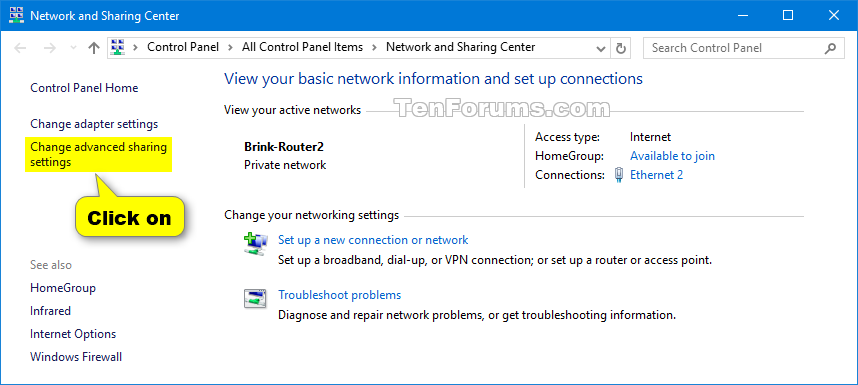Server Service File And Printer Sharing Ports Blocked

Introduction Remote Procedure Call (RPC) is an inter-process communication technique to allow client and server software to communicate on a network. The RPC protocol is based on a client/server model. The client makes a procedure call that appears to be local but is actually run on a remote computer. During this process, the procedure call arguments are bundled and passed through the network to the server. The arguments are then unpacked and run on the server.
Hello i have scom 2012 r2 and once i installing MP for file server and printing it is showing the below file and printer sharing is blocked Summary This object. Brother Printer Resetter Free Download on this page.
The result is again bundled and passed back to the client, where it is converted to a return value for the client's procedure call. RPC is used by several components in Windows Server, such as the File Replication Service (FRS), Active Directory Replication, Certificate services, DCOM, domain join, DCPromo and RDP, NLB and Cluster, Microsoft Operations Master, Exchange and SQL. The RPC Server An RPC server is a communications interface provided by an application or service that allows remote clients to connect, pass commands, and transfer data using the RPC protocol. A typical example of an RPC server is Microsoft Exchange Server. Microsoft Exchange Server is an application running on a computer that supplies an RPC communications interface for an RPC client.
An application will register its RPC server with the operating system’s End Point Mapper (EPM) service so that the remote client can locate the RPC server. When the application registers with the EPM it will indicate the IP address and TCP port that it is listening on. The RPC Client An RPC client is an application running on any given computer that uses the RPC protocol to communicate with an RPC server. An example of a typical RPC client is the Microsoft Outlook application. NOTE: In this document the terms RPC server and RPC client refer to the application running at both ends of an RPC communication. RPC Quick Fixes Common causes of RPC errors include: • Errors resolving a DNS or NetBIOS name. • The RPC service or related services may not be running.
• number of connectivity Problems with network connectivity. • File and printer sharing is not enabled. Use the following procedures to diagnose and repair common causes of RPC errors. Unable to resolve DNS or NetBIOS names in an Active Directory environment.
• Use the following commands to verify DNS is working for all DC's or specific DC's: • To get a DNS status for all DCs in forest, run the following command: • DCDIAG /TEST:DNS /V /E /F: • The '/e' switch runs the DNS test against all DCs in an Active Directory Forest • To get DNS health on a single DC, run the command below. • DCDIAG /TEST:DNS /V /S: /F: • The '/s:' switch runs the DNS test against a specified domain controller. • To verify that a domain controller can be located for a specific domain, run the command below. • NLTEST /DSGETDC: • Servers and clients that are receiving the error should be checked to verify that they are configured with the appropriate DNS server. Servers should not be pointing to their ISP's DNS servers in the preferred or alternate DNS server portion of the TCP/IP settings. The ISP's DNS servers should only be used as forwarders in DNS. • Ensure that at least one correct DNS record is registered on each domain controller.
• To ensure that a correct DNS record is registered on each domain controller, find this server's Active Directory replication partners that run DNS. • Open DNSManager and connect in turn to each of these replication partners. • Find the host (A) resource record registration for this server on each of the other replication partner domain controllers. • Delete those host (A) records that do not have IP addresses corresponding to any of this server's IP addresses. • If a domain controller has no host (A) records for this server, add at least one that corresponds to an IP address on this server. Hp Support Assistant Silent Install. (If there are multiple IP addresses for this server, add at least one that is on the same network as the domain controller you are updating.) • Name resolution may also fail with the RPC Server is unavailable error if NetBIOS over TCP/IP is disabled on the WINS tab in the advanced section of the TCP/IP properties. The NetBIOS over TCP/IP setting should be either enabled or default (use DHCP).
• Verify that a single label domain name is not being configured. DNS names that do not contain a suffix such as.com,.corp,.net,.org or.local are considered to be single-label DNS names. Microsoft doesn't recommend using single label domain names because they cannot be registered with an Internet registrar and domain members do not perform dynamic updates to single-label DNS zones. Knowledge base article - 'Clients cannot dynamically register DNS records in a single-label domain' provides instructions on how to configure your domain to allow dynamic registration of DNS records in a single label domain. The RPC service or related services may not be started Verify the status and startup type for the RPC and RPC locator services on the server that gets the error: • By default, Windows server 2003 domain controllers and member servers all should have the RPC service started and set to Automatic startup and the RPC Locator service stopped and set to Manual Startup. • Windows 2000 domain controllers should have the RPC and RPC Locator services both set to started and automatic startup, while Windows 2000 member servers should have the RPC service started and set to automatic startup while the RPC locator service should be started and set to manual startup.